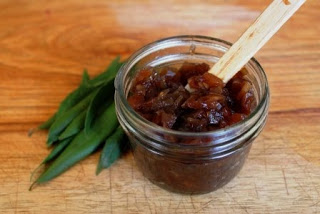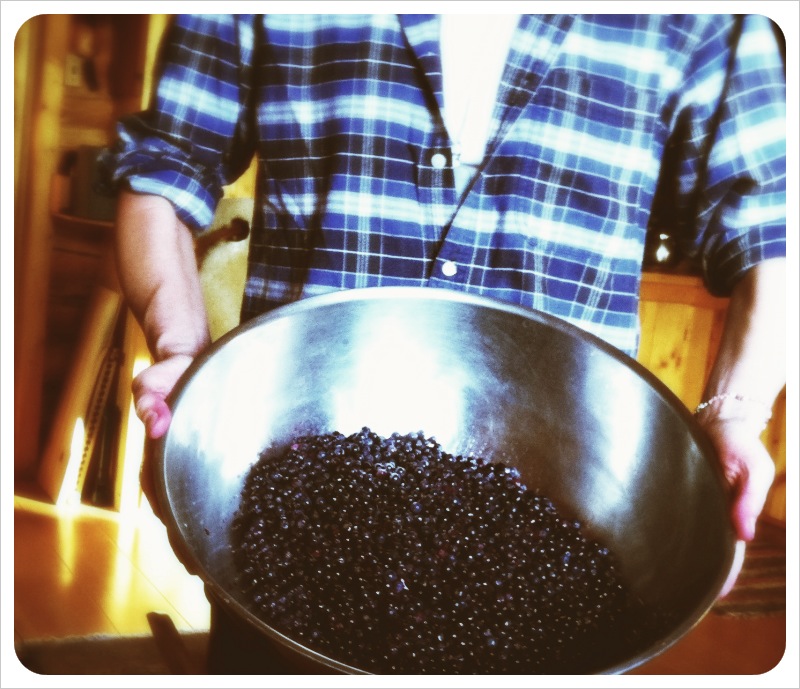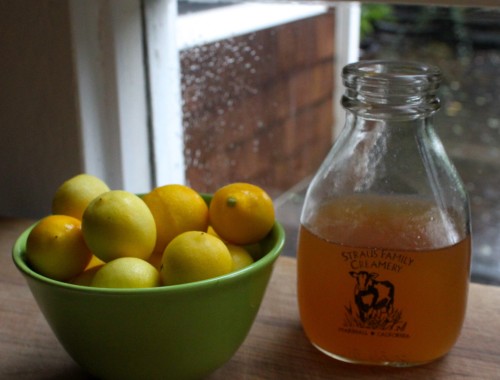This month for the Tigress’s Can Jam, we were asked to get down and dirty with the allium family: onions, garlic, leeks, shallots, scalllions, and their ilk. Except for the few onions I throw in with my pickles, I’ve never preserved alliums before. But I’ve been seeing a lot of mighty fine looking chutneys lately, so I took this as an opportunity to try one out.
I hunted until I found a recipe that I liked — one that offers basic guidelines (do XYZ and then add stuff you like) rather than prescribing rigid rules. It came from Self-Sufficient.co.uk, where they spell “caramelized” the way my London relatives would say is proper: “caramelised,” if you please. One way or the other, I found out that it’s what happens during cooking when natural sugars release the wonderful sweet, nutty flavor and burnished color we associate with caramel.
The first time you see this many chopped onions in one place, it can make you nervous. I definitely didn’t feel the same fondness for my main ingredient as I do for, say, blackberries. But they have their own pungent charm.
I eventually got all the ingredients settled nicely into the pot, where they began cooking . . . and cooking . . . and cooking. Chutney has to simmer down for a good long while. Nearly two hours for this recipe. The good news was that I didn’t have to stand there stirring the whole time. Of course, you never want to wander away from the stove for long, but you can easily work on something else nearby and make regular passes to stir and check up on your creation.
The original recipe says that, after canning, chutney should be left alone for 4-6 weeks to mature and fully develop its flavors, but dang, this is good right now. And our house smells amazing. Here’s the “stuff I liked” today:
Caramelized Onion and Apple Chutney
6 large red onions
3 apples
4 cloves garlic
3 cups golden balsamic vinegar
3 cups brown sugar
3 bay leaves
20 crushed peppercorns
1 teaspoon cloves
Chop the onions as fine as you like and cook them in a little oil until they’re soft. Add them, along with everything else, to your big, nonreactive, heavy-bottomed cooking pot. Bring the mixture to a boil and then down to a simmer. Continue to simmer until the onions are translucent and the liquid has nearly evaporated. This may take as long as two hours.
I learned a neat trick for determining whether your chutney is done. It comes from Thane Prince’s, Jellies, Jams & Chutneys. (I seem to be fully on-board with the Brits for this recipe.) Drag a wooden spoon through the mixture, across the bottom of the pan. If it leaves a clear path, with only a little liquid running back, you’re all set.
I nearly overcooked the whole batch trying to get this photo, spoon in one hand, camera in the other . . . but it should look pretty much like this:
When jarring this recipe, you’ll notice lots and lots of air bubbles. I worked around the sides with my little spatula to release them. I allowed 1/2 inch of head space and processed 15 minutes. Yielded six half-pints
Alliums! What’s next?







